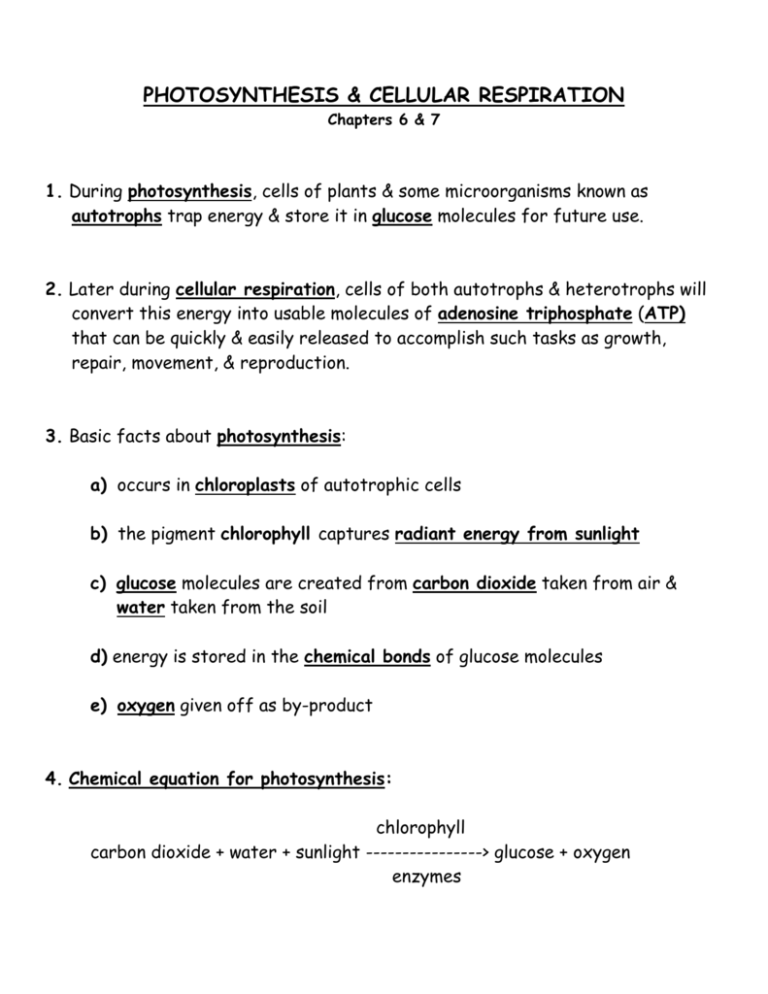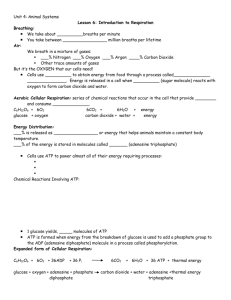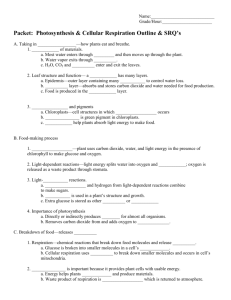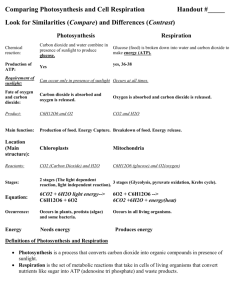Energy Transfer
advertisement

PHOTOSYNTHESIS & CELLULAR RESPIRATION Chapters 6 & 7 1. During photosynthesis, cells of plants & some microorganisms known as autotrophs trap energy & store it in glucose molecules for future use. 2. Later during cellular respiration, cells of both autotrophs & heterotrophs will convert this energy into usable molecules of adenosine triphosphate (ATP) that can be quickly & easily released to accomplish such tasks as growth, repair, movement, & reproduction. 3. Basic facts about photosynthesis: a) occurs in chloroplasts of autotrophic cells b) the pigment chlorophyll captures radiant energy from sunlight c) glucose molecules are created from carbon dioxide taken from air & water taken from the soil d) energy is stored in the chemical bonds of glucose molecules e) oxygen given off as by-product 4. Chemical equation for photosynthesis: chlorophyll carbon dioxide + water + sunlight ----------------> glucose + oxygen enzymes 5. Basic facts about cellular respiration: a) ATP is composed of 1 adenosine molecule & 1 ribose sugar molecule with 3 phosphate groups attached b) begins with glycolysis, which takes place in the cytoplasm & ends in the mitochondria of all cells c) requires oxygen taken from air (aerobic respiration) d) water & carbon dioxide given off as by-products e) stored energy is released from glucose when chemical bonds are broken in ATP molecules (adenosine triphosphate) (ATP -> ADP -> AMP) 6. Chemical equation for respiration: enzymes glucose + oxygen ---------------> water + carbon dioxide + ATP 7. When cells are without oxygen, an anaerobic process called fermentation produces ATP molecules. (anaerobes or temporary lack) a) alcoholic fermentation - for example, yeast cells produce carbon dioxide ethyl alcohol as by-products of respiration - when yeast is used in making bread, the carbon dioxide forms bubbles in the dough & cause it to rise b) lactic acid fermentation - lactic acid is a by-product of respiration in muscle cells during exercise - its build up causes muscle fatigue











